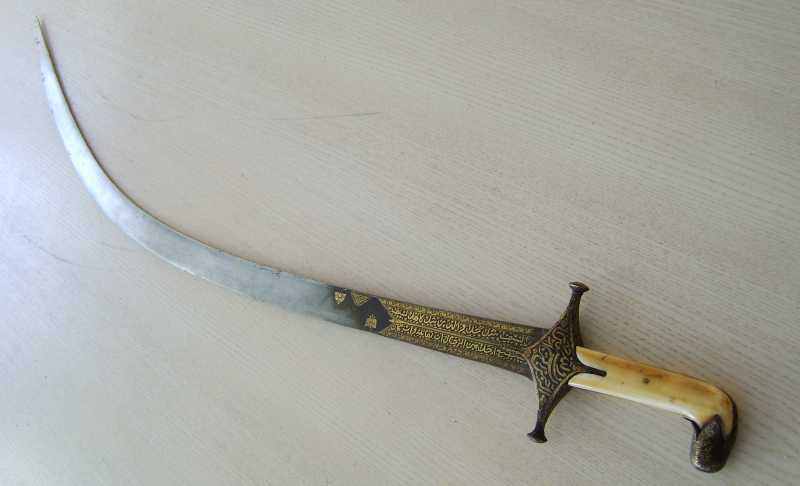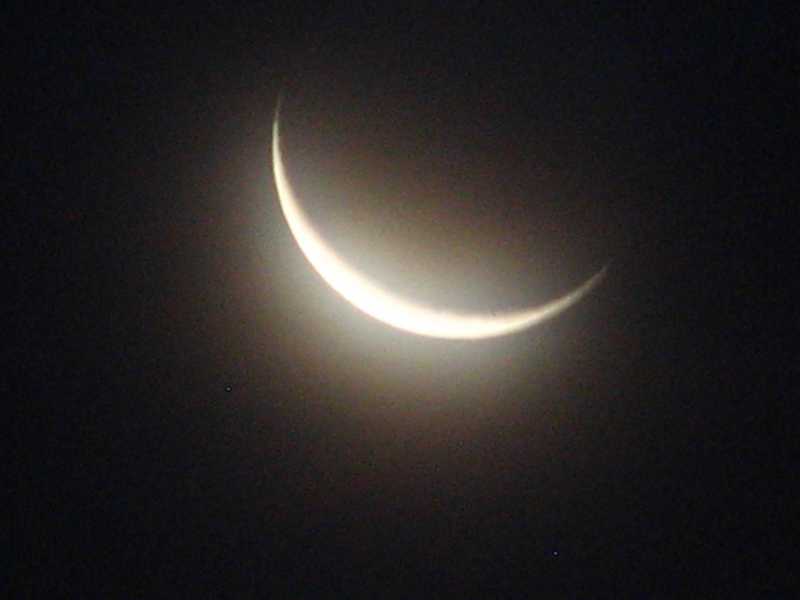FWP:
SETS == INEXPRESSIBILITY;
SYMMETRY
GAZE: {10,12}
SWORD: {1,3}
This is one of the great well-known verses of the divan.
Nazm's criticism here is reminiscent of his famous attack on {1,1}.
The naked scimitar is not the 'sight of Eid,' but the 'Eid of sight'. As the commentators explain, the curved scimitar suggests the crescent moon that ends the fasting month of Ramzan and signals the beginning of the festival of Eid. The scimitar is not only curved but also bright and shining like the moon of Eid, and it appears suddenly after one has been looking for it with eager impatience.
Moreover, the meaning of ((ishrat (see the definition above) includes not only joy, but also society or companionship-- which is itself very much a part of Eid. (To my mind, Platts has the order of the two senses backwards: for confirmation of this see {17,7}.) Thus the pleasure of the two possible readings of the second line, one of which takes as primary the idea of the crescent moon of Eid (and identifies it with a naked scimitar), and the other of which takes as primary the naked scimitar (and identifies it with the crescent moon of Eid).
And of course, just as the Eid moon signals the approach of a joyous feast and an end to the days of fasting, the scimitar signals to the passionate lover/mystic the approach of joyous union in death with the divine Beloved, and the end of a life of deprivation, suffering, and longing. There is even a sexual overtone in the vision of the scimitar's 'nakedness'. For a discussion of the uses-- and positioning-- of the word 'naked' [((uryaa;N], see {6,1}. Look also at the secondary meaning of na:z:zaarah , 'amorous glance, ogling'. It's not for nothing that the death anniversary celebration of a Sufi pir is called his ((urs , or wedding festival.
On the joy of imminent execution, and the image of the sword,
compare {1,3}. For another verse that equates the beloved's sword with the crescent moon, see the unpublished first verse of {197} (use the Raza link for access). Another verse about the curve of the shamshiir : {396x,7}.


Nazm:
That is, on the execution-ground lovers find such joy that upon seeing the naked scimitar they consider that the crescent moon of Eid has become visible. Because of the tightness of the meter, the word 'crescent moon' [hilaal] was not able to come in, and the meaning of the verse has remained incomplete. (18)
== Nazm page 18